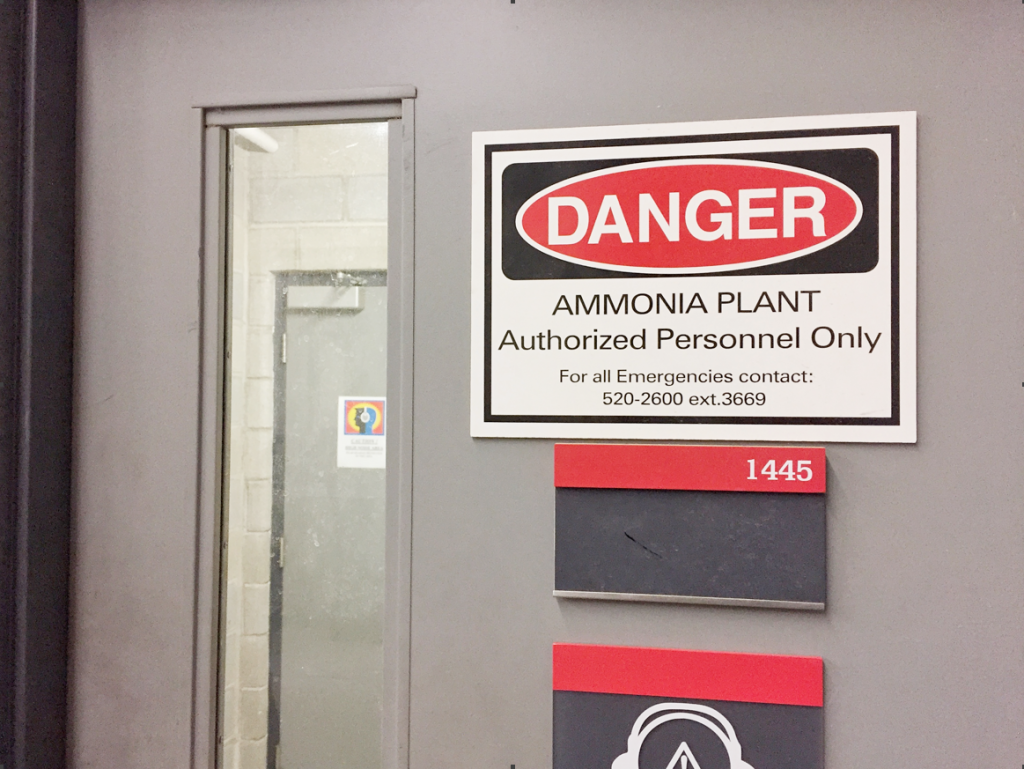Low risk for Ammonia leaks in Ottawa rinks
By Alexander Behne
A City of Ottawa official says that all hockey rinks in the city — including Centretown’s McNabb Arena — are equipped to detect ammonia leaks and prevent any tragedy like the one that caused the deaths of three arena workers in British Columbia last month.
Dan Chenier, the city’s general manager of recreation, cultural and facility services, said in a written statement that although ammonia is used in all arenas in the city as a refrigerant to create and maintain ice, it is only present in compressor systems that are isolated in rinks’ mechanical rooms.
“Mechanical rooms with ammonia-based compressors have emergency systems in place to detect any leaks and avoid human exposure,” he said.
These systems activate both visual and audio alarms if they detect an ammonia leak, and automatically trigger exhaust fans to vent the gas from the building.
In October, three arena workers died at Fernie Memorial Arena in Fernie, B.C. following an ammonia leak. The surrounding neighbourhood was evacuated and a seven-day state of emergency was declared in the city. The tragic incident prompted questions about the safety of using ammonia in hockey rinks.
Dan Desjardins, operations manager at Carleton University’s Ice House, said that following the news of the incident in Fernie, the Ice House is upgrading its ammonia-detection equipment.
The current system has a single sensor mounted in the ceiling of the building’s isolated mechanical room to detect the lighter-than-air gas. The new system will replace the sensor with a far more sensitive one — triggered at 25 parts per million rather than the current 100 p.p.m.—and add a second sensor in the room at eye level.
The new sensors will also be better at detecting ammonia gas specifically.
At the rink, the ammonia never leaves a large pre-fabricated structure within the mechanical room. Desjardins said that if there was an ammonia leak in the arena, it would be treated in the same way a fire alarm: the building would be evacuated and the authorities called in to isolate and repair the leak.
Ammonia is present in liquid form within a refrigeration plant’s compressor system, but becomes a gas when released into the air. It is also used as a refrigerant in food plants as well as hospitals, said Desjardins.
In most consumer appliances, such as refrigerators and air conditioners, ammonia has been phased out in favour of a similar substance called freon. Freon is colourless and odourless — unlike ammonia, which has a distinctive, strong smell similar to that of rubbing alcohol — but is present in such small quantities that a leak would pose no danger to the occupants of a home.
David Miller, a chemistry professor at Carleton University, said that although ammonia is corrosive, liquid ammonia itself is not toxic. It is present in a variety of cleaning products available at any grocery store.
Ammonia becomes dangerous, he says, when released in its gaseous form. If inhaled, it causes damage to the tissue inside the lungs. And at high enough concentrations, the gas can be lethal.
However, Miller said there is no reason to fear that a deadly leak like the one in Fernie is likely to occur in Ottawa.
“We’ve been using ammonia in refrigeration plants at least since Queen Victoria was young,” he said. “It’s a perfectly safe technology and incidents like this are exceedingly rare.”
In an ice rink, the floor under the ice surface functions like a large refrigerator. Older arenas used a system called “direct ammonia,” where large amounts of liquid ammonia would circulate in pipes under the ice.
Chenier said these systems were replaced in all Ottawa rinks several years ago in favour of safer systems which instead circulate polypropylene glycol or brine under the ice surface.

